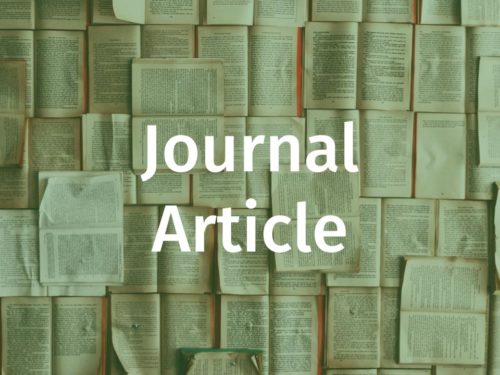[I]nternational aid has rendered the occupation cost-free. It has even enriched Israel’s economy. Ghada Karmi

The cost of and the responsibility for occupying the Palestinian territories is increasingly carried by other actors than Israel.
I discuss how this is reinforced and enabled by both reconstruction efforts and the Oslo accords in the third part of this series on “Destructive Reconstruction.” The beginning of this development is the establishment of the United Nations Relief and Works Agency for Palestine Refugees in the Near East in 1949 with the purpose of providing emergency response to the Palestinians displaced during the war surrounding the foundation of Israel. With the signing of the Oslo Accords this logic was further extended to incorporate the PA itself and today even the politics of reconstructing and rebuilding Gaza are subject to it.
The Oslo Accords were supposed to be the beginning of an independent Palestinian state. A semi-autonomous Palestinian authority, intended to become a full-fledged state, replaced the Israeli occupation in (parts of) the Occupied Palestinian Territories (OPT). Instead this interim setup became permanent, with the PA standing between the vision of achieving independence and the reality of cooperating with Israel. For Israel, Oslo symbolized the possibility to portray itself as generous partner in negotiations, granting Palestinians self-administration, to benefit from the loosened boycotts from Arab neighbours, all the while Israel managed to consolidate and deepen its control of Palestinian lives by ‘subcontracting’ the occupation to the PA. This is most clearly visible in the way Palestinian armed resistance forces – created under Oslo out of the existing armed groups and envisioned to protect Palestinians (as they did during the second Intifada) – have become security forces focused on policing and eradicating internal resistance against the occupation.
The 2003 road map is a turning point in this development: bowing to EU and US pressure for security sector reform, the PA agreed to actively arrest Palestinians engaged in armed resistance against Israel. With the help of European and American security consultants Mahmoud Abbas profoundly reconstructed security forces in terms of training, security doctrine and deepened cooperation with Israel. Security forces focused on counter-terrorism and policing, but no training prepared them to fight off external threats or invasions.
Regarded as collaborating with Israel and enforcing the occupation by many Palestinians, Abbas referred to security cooperation with Israel as “sacred.” This statement, as contradictory it might seem, makes sense from Abbas’ perspective. Security forces have become essential for the PA, nowadays “a lucrative industry and a comfortable hub for the political-economic elite […], increasingly detached from the circumstances of the population” to protect their interests, safety and wealth (Dana 2014). PA security forces have tortured prisoners, arrested protestors, activists, and journalists, and assisted the Israeli military in arrests – all funded and supervised by Europe and America. With more than a quarter of the PA budget allocated to security and with about 45% of its employees in the security sector, the PA depends on the US and the EU funds to continue the program. In 2013 the US provided $70 million specifically for this end and the EU directly funded the authority with $227 million and further $406 million for economic and security related purposes. This money directly subsidizes the PA’s continued security cooperation and the oppression of their own people and it also directly reduces the price Israel should have to pay for its continued illegal occupation.

The same happens with money raised for the reconstruction of Gaza: external actors carry the cost of reconstruction, while Israel profits, and Palestinians become more dependent. Take for example the way the UN has become part of a system of control and information gathering in Gaza. To control the import of bricks, cement and steel reinforcing – dubbed as “dual-use” materials because they can also be used to build tunnels instead of houses – Israel has managed to persuade the UN to set up a broad system of oversight where every item of dual-use material will be monitored all the way from the factory to the building it is intended for. To this end a database of suppliers – few factories are chosen and most are Israeli – and consumers – information about the damage done to a building, ID numbers of the family living there, GPS coordinates and further personal information – is planned. But for materials to reach either a family rebuilding their house or the PA an official building, Israel needs to give its approval. The UN would be heavily involved in monitoring and inspecting the entire process and provide all the gathered information to the PA, which in turn shares it with Israel.
In the end, Palestinians are under more surveillance and control than ever, with the UN as integral enabling part of the occupation. An attendee at the presentation of this envisioned system of oversight and reconstruction, referred to it as, “the next stage of Israel’s blockade of Gaza […] now, the international actors are being embedded and made complicit in the siege.” In its attempt to ‘help’ Palestinians, the UN is willing to accommodate Israeli demands to such an extent that is becoming part of the occupation’s infrastructure, rendering it ‘better’ and easier for Israel to sustain. Israel also stands to profit directly from this way of doing reconstruction: Palestinians are forced to buy most cement from Israeli companies, such as Nesher Israel Cement Enterprises, which is itself making profits from the construction of illegal settlements and the Separation wall in the West Bank. Israel also profits indirectly by taxing the money intended for reconstruction.

With the international community paying for reconstruction, while allowing Israel to benefit financially and entrench its control and surveillance of the lives of Palestinians, the failure to hold Israel accountable for its actions renders the international community complicit in the injustice inflicted upon Palestinians. In order to avoid this absurdity, it is high time to hold Israel accountable for its actions, otherwise the circle of destruction and reconstruction will continue with international funds paying for the damages and Israel receiving up to one third of all funds raised for reconstruction and aid. Donors and the international community are well aware of this problem: the UN Conference on Trade and Development found that 45 cents for every dollar produced in the OPT, flow back to Israel. In the final article of this series I will examine the international community’s wider approach to Palestine: I analyse how the international community imposes its model of development on Palestinians, an approach skirting the political aspect of the Israeli occupation at the heart of the Palestinian struggle.
This article is part of a Series. Click for Part 1 and Part 2.










